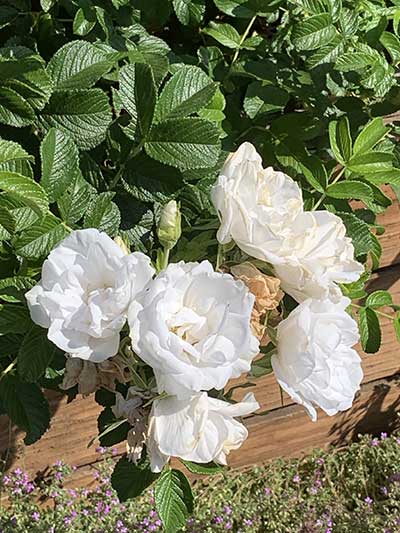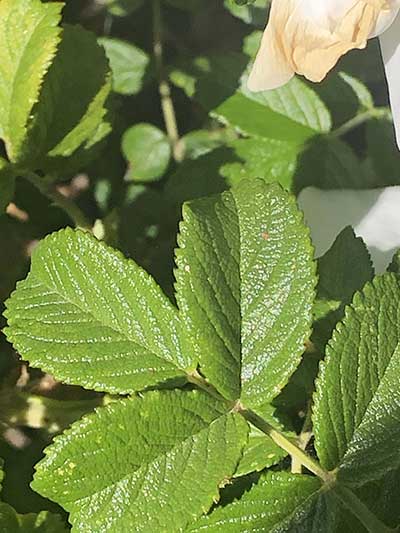Rugosa Rose
- Scientific Name: Rosa Rugosa
- Garden: Edibles and Herbs Garden
- Plant Type: Shrub
- Evergreen/Deciduous: Deciduous
- Sun/Shade Exposure: Full Sun
- Moisture Requirements: Moist, Well-Drained
Plant Information
With its bright green foliage, summer long bloom and plethora of rose hips in the fall, Rugosa Rose makes a nice alternative to the more common hybrid T roses. Morphology: This is a deciduous plant that grows 4’-6’ tall and as wide with stout upright stems forming a dense rounded shrub. It bears compound leaves consisting of 5-9 leaflets arranged in an alternate fashion. Leaf blades are elliptic in shape and have serrated edges. The distinctive wrinkled surface of the leaves is referred to as rugose. In the fall the leaves turn yellow to bronze to orange before they are shed for the winter. This rose variant forms perfect flowers which range in color from white to rose pink to deep pink. These fragrant flowers are borne from May through July and then sporadically throughout the remainder of the summer. Flowers can be 2.5” to 3.5” wide when they are fully open. They may be single or double. Flowers give rise to 1" fruits known as rose hips in August. While they are sweet and edible, they are very seedy. If they are to be used for jams and jellies it is best to sieve out the seeds. The stems on this plant are very thorny! A good pair of leather gloves and a long -sleeved shirt will be required when plant needs pruning. Adaptation: This species is widely adaptable to most sites. It prefers full sun. It is often found in maritime areas as it can withstand salt spray. For this reason, it is often known as saltspray rose, sand rose, beach tomato or sea tomato. Pests: While Rugosa rose is susceptible to black spot, viruses and aphids, none of these generally impact this shrub.
Data Source
www.pnwplants.wsu.eduPlant Photos







